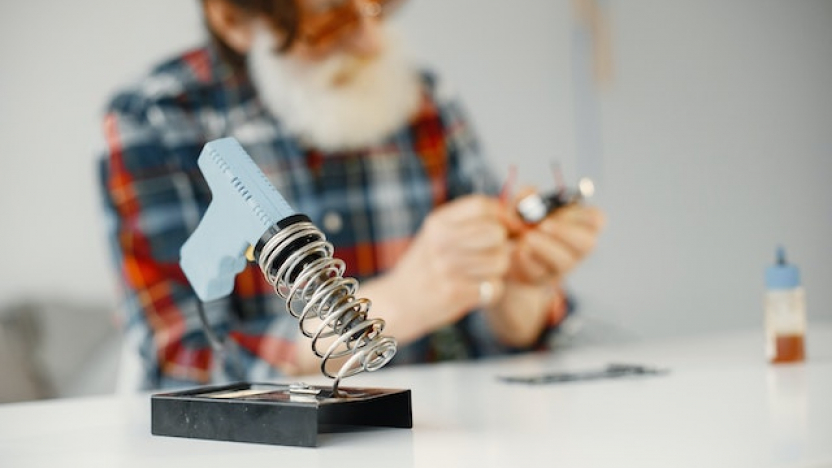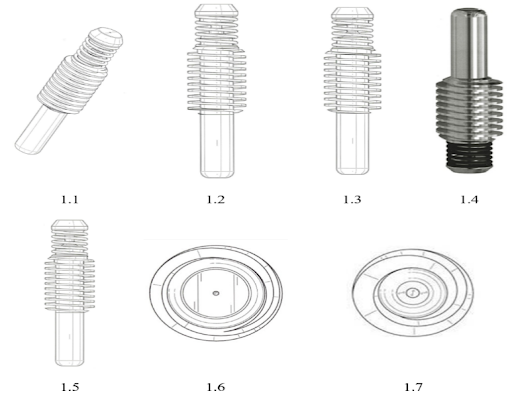Design protection in Europe: What constitutes a component part?

Component parts of complex objects that are not visible during ‘normal use’ of the object do not enjoy design protection in Europe. But what constitutes a component part of a complex object? Volha Parfenchyk shares a recent ruling by the EU General Court that provides some clarification.
Component parts of complex objects are ineligible for design protection in Europe where they are not visible during ‘normal use’, as we covered in our earlier article about a bike saddle design dispute. The related question of what exactly constitutes a component part of a complex object, as opposed to a separate object, was addressed by the EU General Court recently in B&Bartoni v EUIPO.
Torch parts and design protection in Europe
 In 2011, Hypertherm, Inc. filed an application for an EU Community design for an electrode for welding torches as represented in the following images:
In 2011, Hypertherm, Inc. filed an application for an EU Community design for an electrode for welding torches as represented in the following images:
In 2017, B&Bartoni spol. s.r.o. filed an invalidity application against this design, which included the main argument that the electrode was a component part of the complex object (the welding torch) which was not visible during normal use of the torch. The EUIPO Invalidity Division agreed and declared the design for the electrode invalid.
On appeal, however, the EUIPO Boards of Appeal disagreed, finding instead that the protected electrode does not constitute a component part of the complex object (the welding torch). B&Bartoni appealed the decision to the EU General Court.
The ruling of the EU General Court
In its ruling of March 2023, the EU General Court agreed with the EUIPO Boards of Appeal. First, it referred to the provision of the EU Design Regulation, which stipulates that a component part of a complex product can only be considered new and having individual character (as required for design protection in Europe) if it remains visible during normal use of the object. According to the Court, this provision limits the rights of the rights holder and so should be interpreted narrowly to minimise the exclusion of protection of designs.
In addition, the question of whether a product should be seen as a ‘component part of a complex product’ must be assessed on a case-by-case basis, according to a set of relevant factors. The Court found the following facts relevant and important in this case when distinguishing between separate objects and component parts:
- Whether the product that is incorporated into the other object is a consumable. If the shelf life of this product is short, because it needs continuous replacement due to extensive usage, then this can indicate that it is a consumable and is therefore a separate product. Agreeing with the Board of Appeal, the Court found that the electrode is consumed, used and replaced quickly, and should be regarded as a consumable and as a separate product therefore.
- Whether a product can be removed without disassembling the object of which it makes part. According to the Court, if this is possible and/or if this product is intended to be replaced regularly and straightforwardly by end users, then the product should be seen as a separate product rather than as a component part of another object.
- Whether both objects (the complex object itself and the product that is incorporated in it) can be sold separately. According to the Court, when purchasing a torch without an electrode, the purchaser will not likely conclude that that torch is broken or incomplete. This is an important criterion signifying that that product (the electrode in this case) does not constitute a component part of another object.
- Whether the products incorporated into complex objects are interchangeable. The Court stated that an electrode at issue could be replaced by a different electrode. In addition, torches of different types could use the current electrode. This interchangeability serves as a good indicator of whether the products at issue are component parts of other objects or separate from them.
Key takeaways from the EU Court ruling
This ruling provides an important guideline for assessing whether products, incorporated in other objects, should be considered component parts of these objects or as separate accessories.
However, it must be still remembered that the Court did not give a set of strict rules that must be applied in similar disputes. Whether a design product is a component part of another object or separate still has to be decided on a case-by-case basis, while taking into account the general guidelines developed by the Court in this case.
To find out more about design protection in Europe, speak to your Novagraaf attorney or contact us below.
Volha Parfenchyk works in Novagraaf’s Knowledge Management department. She is based in Amsterdam.